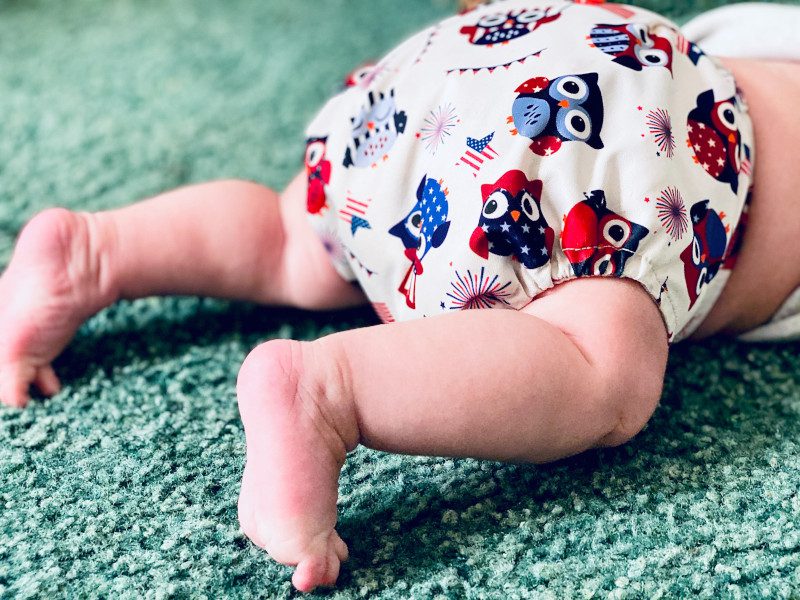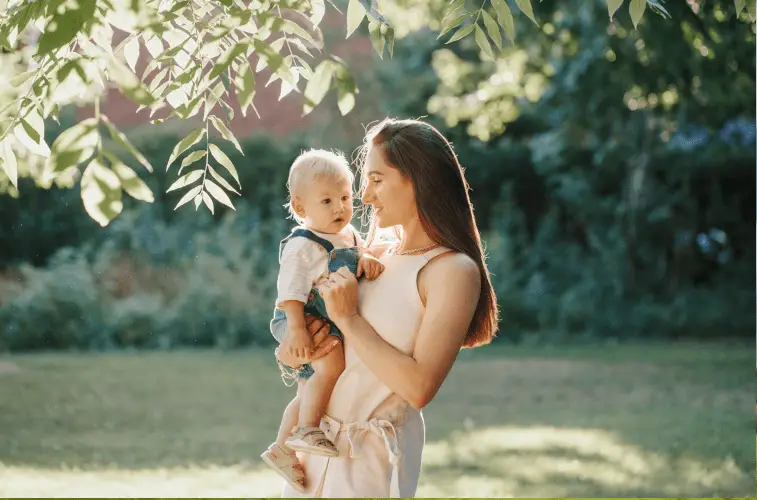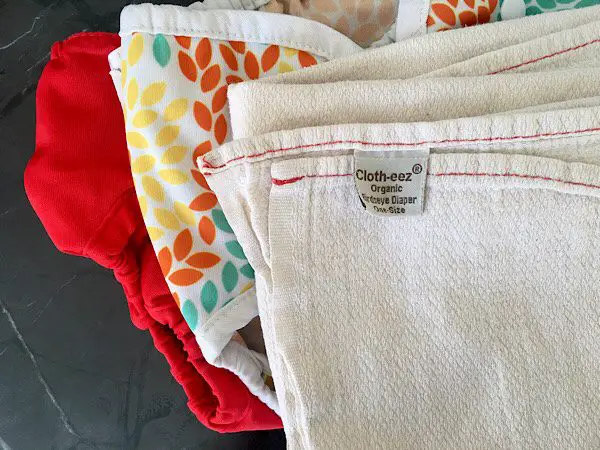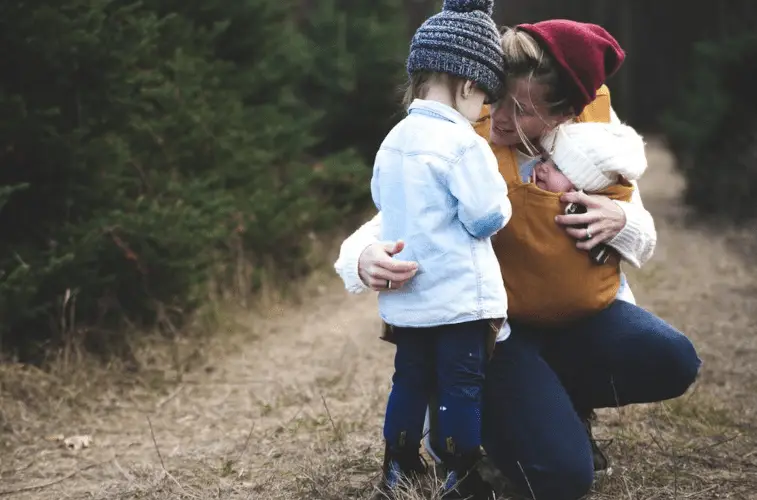Want to learn how to cloth diaper? I promise you, you can learn! In this post I outline the important things to know in order to master cloth diapering. Warning! Poop talk! (Moms talk about this stuff…)
This post may contain affiliate links. As an affiliate, I make a commission on qualifying purchases at no extra cost to you. See Disclaimer for more details.
Cloth diapers are wrongly portrayed as mysterious, strange, and tricky.
The reality is, cloth diapering is not hard to figure out at all, it just takes practice to master a new skill.
Think of it this way: there is only one way to use a disposable diaper, so the routine is basically the same for everyone.
Cloth diapers are different, the techniques used to cloth diaper are not science, rather they are “art”. By this I mean that the techniques will vary slightly from person to person due to different needs, preferences, etc.
The best way to learn how to cloth diaper is to buy some, use them, and figure out what works for you.
But since I realize it is a little daunting to take a diapering shot in the dark, I’d like to share some of my best insights and tips I have learned from using and LOVING cloth diapers with multiple children.
In my experience, all it takes to learn how to cloth diaper is learning to master several Cloth Diaper “You Do’s” and “You Do Not’s”.
These “dos” and “do nots” are not complicated, and vary from person to person in their application. Lets go over the “Do Not’s” first.

Cloth Diapering Do Not’s
1. You do not need to master every diaper fold
If you choose to use flats or prefolds, you will need to fold the diaper to get it on your baby. But you absolutely do not need to learn or use 100 different folds.
I use one fold, in fact I used the same one but modified for my toddler and my newborn before my toddler graduated to the potty.
Some women actually like to learn and use more folds. That’s great! They are kind of fun. But they are not necessary.
Something to keep in mind is that if a fold is not working for you, (ie. you’re getting leaks, too bulky, or you have a fit issue) then learning and trying a new fold may be what solves your problem.
There are folds that are good for boys, and folds that are good for newborns, folds that are good for all types of different situations and problems that arise.
But you do not need to learn them all, just google “cloth diaper fold for leaks” if you need it, it’s that easy!
There are lots of great YouTube videos that will teach you to fold a diaper.
My personal favorite is the kite fold. It is trim, quick, and easy.
Maybe you will like a different fold. That’s okay!
Or, maybe you won’t even use a type of cloth diaper that requires folds. (only flats and prefolds do.) If so, then move right along!

2. You do not need a ton of fancy gadgets
Women have been cloth diapering for thousands of years and they did it just fine without expensive gadgets. All you really need is water and a diaper.
That being said, there are certainly accessories that make cloth diapering easier.
Snappis, wetbags, covers, and cloth wipes, are some diaper tools I wouldn’t like to go without. (But you technically could.)
Some gadgets I like and own but may not be immediately necessary include:
- Liners (I use these)
- A sprayer (I use this one)
- A changing mat (I use this one)
- Extra snappis and wet-bags
- A diaper pail (I use a cute bucket I found at ikea 🙂 )
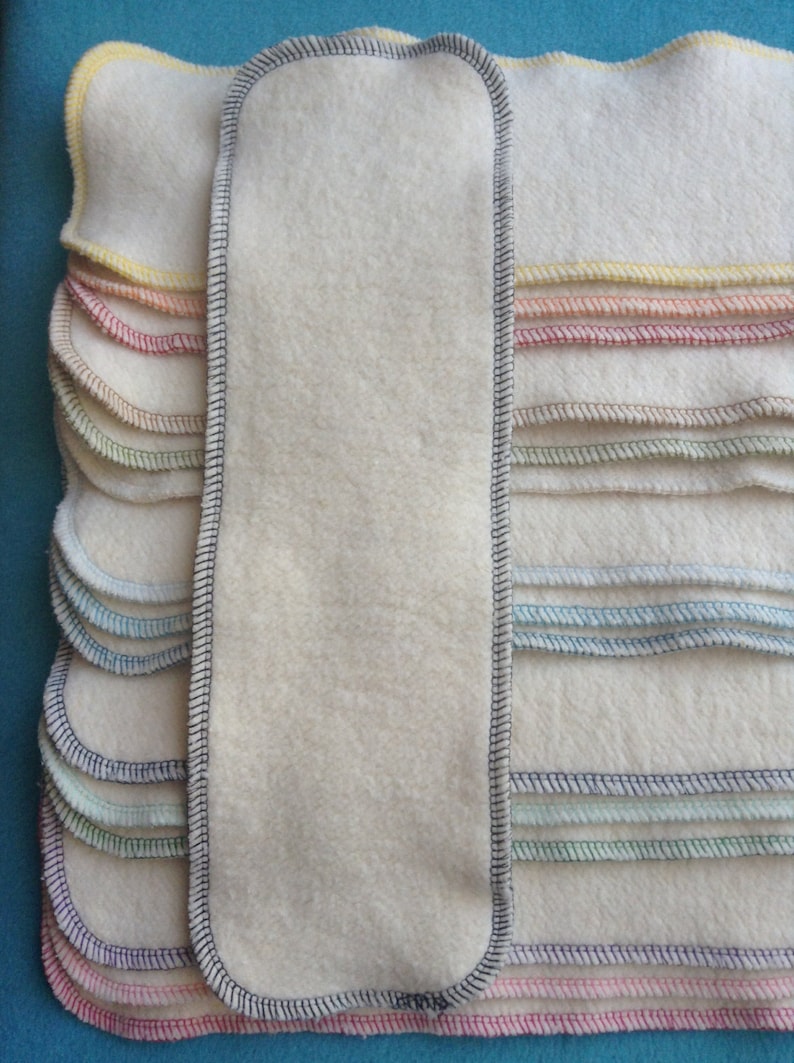
Accessories I do not need or desire (but some parents do) include:
- A spray shield
- Wipe solution
- Disposable liners
- and more.
My advice is to start with the bare minimum basics and then add things as you decide you want to try them.
Don’t stress about building ‘your stash’ right from the beginning. It will grow with you, I promse
Especially on black fridays….
3. You do not need expensive special detergent to wash cloth diapers
Cloth diapers are dirty things, they need regular strong detergent. Don’t wash your cloth diapers in homemade detergent, and don’t feel like you need to buy special ‘cloth diaper specific’ detergent.
Some moms find that their baby has sensitive skin, so they switch to “pure” detergent. You will figure out if you need that after trying diapering for a while. Don’t stress about it!
(Notice a pattern here? The moral of this story is don’t stress!)
4. You do not need a perfect system from day one
Cloth diapering is really one of those learn as you go kind of things.
When I started Cloth Diapering, I was using prefolds since that’s what people online recommended to me. I decided I didn’t like them very much, and now I use flats exclusively.
Cloth diapers are easy to re-sell online, so you can always try something and sell it if you decide you don’t like it. I’ve sold tons of diaper stuff on ebay, mercari, etc.
Or, some companies like Nickis have a “trial period” where they allow you to actually TRY THE DIAPERS for a time and then return them. Yup! Awesome.
Just jump in feet first, and you will figure out what you like the best!

Now, lets talk about the cloth diapering “You Do’s”
Cloth Diapering Do’s
1. You do need a way to fold and secure the diaper on the baby.
- If you are using prefolds or flats, you will fold the diapers, pin or snappi them on, then put on a waterproof cover.
- If you are using fitted diapers, you will have to snap, pin, or snappi the diaper closed before putting the cover on.
- If you are using pockets diapers or AI2s (All in twos), you will stuff the diaper into the pocket, or place it on top of the cover and that’s all. Done.
- If you are using AI1s (All in ones) then you will just snap or velcro the diaper on similar to a disposable diaper.
Not so complicated! It just depends on what you are using.
Take some time to research what kind of diapers you want to use. There are many boards and websites that will tell you the pros and cons to each type of diaper, and how to use it.
As I mentioned above, I like flats the best. Make sure to read my list of pros and cons to using Flats!

2. You do need some wipes.
You have to have some way to wipe the stuff off your babies bum. 🙂
I like to use cloth wipes because I tend to: wipe, place wipe in dirty diaper, fold dirty diaper and get it out of the way, put on new diaper.
This way, I don’t have to fish out the wipes and throw them away, it all just goes into the same wetbag. Easy peasy.
Plus, cloth wipes are cheaper!
Do you have to spray each individual wipe if there is poop on it?
Generally, I try to get off as much poop as I reasonably can from the diapers and wipes, so that there’s not excess poop in the washing machine. If it is a small smear, then I don’t bother cleaning it. It will dissolve in the water when it washes. If it is a bigger poop piece, then it needs to go in the toilet.
If your baby has a very dirty bottom, you can wipe off as much of it as you can WITH the dirty diaper, then use the wipes to do the ‘detail work’. That way you won’t have to worry about spraying chunks off the wipes, just the diaper.
Sorry for that visual.
I don’t spray each wipe, unless they are super super bad. That is kind of rare though.
I keep my cloth wipes in a plastic container. I keep them wet, but don’t use special wipe solution. Sometimes I put the tiniest drop of soap on a wipe, but not often. I don’t want to dry out baby’s skin.
3. You do need to get off poop somehow (except if your baby is exclusively breastfed)
Breastfed baby poop is water soluble. It can go straight into the wash.
As soon as your baby starts to drink formula, or eat food, you will notice their poop will look quite different. Instead of being yellow and ‘seedy’, it will be brown, green, have food bits in it, and smell bad.
It is now necessary to wash off the poop in the toilet.
Some moms like to wash off even breastfed poop, because it tends to stain. I don’t really care. about stains. (If you care, you can help stains by hanging your diapers in the sun. Don’t bleach them just to remove stains, it will ruin the diapers.)

You can use a sprayer, swish your diaper in the toilet, or use a for-cloth-diaper-use-only-spatula to get poop off. (Yes, people do that.)
I use a sprayer and swish. It really isnt that bad, but it does take practice. Go slow, or you will splash. 🙂
Poop water in the face is just a part of motherhood. But hey, at least your baby can’t reach his hand down his diaper as easily, or pull it off himself!
4. You do need a place to store dirty diapers.
Dirty diapers need a place to go while they’re waiting to be washed. You can put them in many places:
- Directly into the washer to sit until it is full (not great if you do lots of laundry or don’t wash diapers every day)
- in a hanging wet bag
- in a wet bag that is in a pail
- in a pail with no wetbag
- in a grocery sack (good for travel or emergencies)
Every mom will tell you why their way to do it is the best. I currently use a pail liner from Planet Wise inside a trash can pail that has a lid.
After I change a diaper, I clean it if its poopy, and throw it in the pail.
On diaper wash day, I take the wetbag liner full of diapers and dump it into my washer. I turn he liner inside out, and throw it in too. Then I wash them, along with the liner.
I recommend having at least two liners to rotate through while one is being washed. And maybe a small one that zips for your purse.
5. You do need a wash routine that gets your diapers clean
I’ve noticed that the opinions regarding how to wash diapers are extremely varied, and not washing ‘by the rules’ for some reason means you aren’t doing it right.
Huh? It’s a poopy diaper!
There isn’t a magic temperature, cycle length, number of cycles, or any other magic element that works universally.
Moms are different, washing machines are different, babies are different.
However, here are some general guidelines I like to use:
- Wash one time to get off poop. (I usually make this a cold wash)
- Wash a second time to get clean. (I usually make this a hot wash)
- Dry cloth in dryer, dry PUL in air.
Make sure you use enough detergent to clean your diapers. Some websites tell you to use 2-5 times MORE than normal. Why? That is not necessary.
The best way to tell if your diapers are getting clean, is to SMELL THEM after they are washed and still wet.
Put your nose on one. If it smells, its not clean. Go wash your nose.
I also tend to add some Borax to the wash because I have very hard water. (I have a huge 5 gallon bucket full of borax, but you can also buy small boxes like these.)
Don’t add bleach or vinegar unless you REALLY need it, it will hurt the diaper fibers and wear them out too soon.
6. You do need a way to dry your diapers
When I dry my diapers, I take out the covers and wetbag (anything with PUL) and hang them to dry in my laundry room on a rod above my laundry machines, or in the bathroom over the curtain rod. The rest of the fabric diapers get dried in the dryer.
You technically can put PUL in the dryer, but some of mine have been ruined by the heat. So now I just air dry them.

You can air dry or sun dry your diapers too, whatever works for you. Just note that it will take longer. It is gentler on your diapers to air dry.
Whew! That was a long list!
Mastering the art of cloth diapering is not hard, it just takes practice and experimentation. You will figure out what routines you like, and what methods work for YOU.
It doesn’t really matter if you do diapers the same as other moms, as long as your diapers are clean and its working, thats all that matters!
The number one way to determine if your method is right and you have mastered it, is this: is it working?
If its working, then you’ve got it down!!
What kind of diaper are you planning on using? What other questions did I not answer in this post?
If you liked this post, also check out these!
Why Flats are the Best Cloth Diaper
12 Super Random But Effective Ways I save My Family Money
